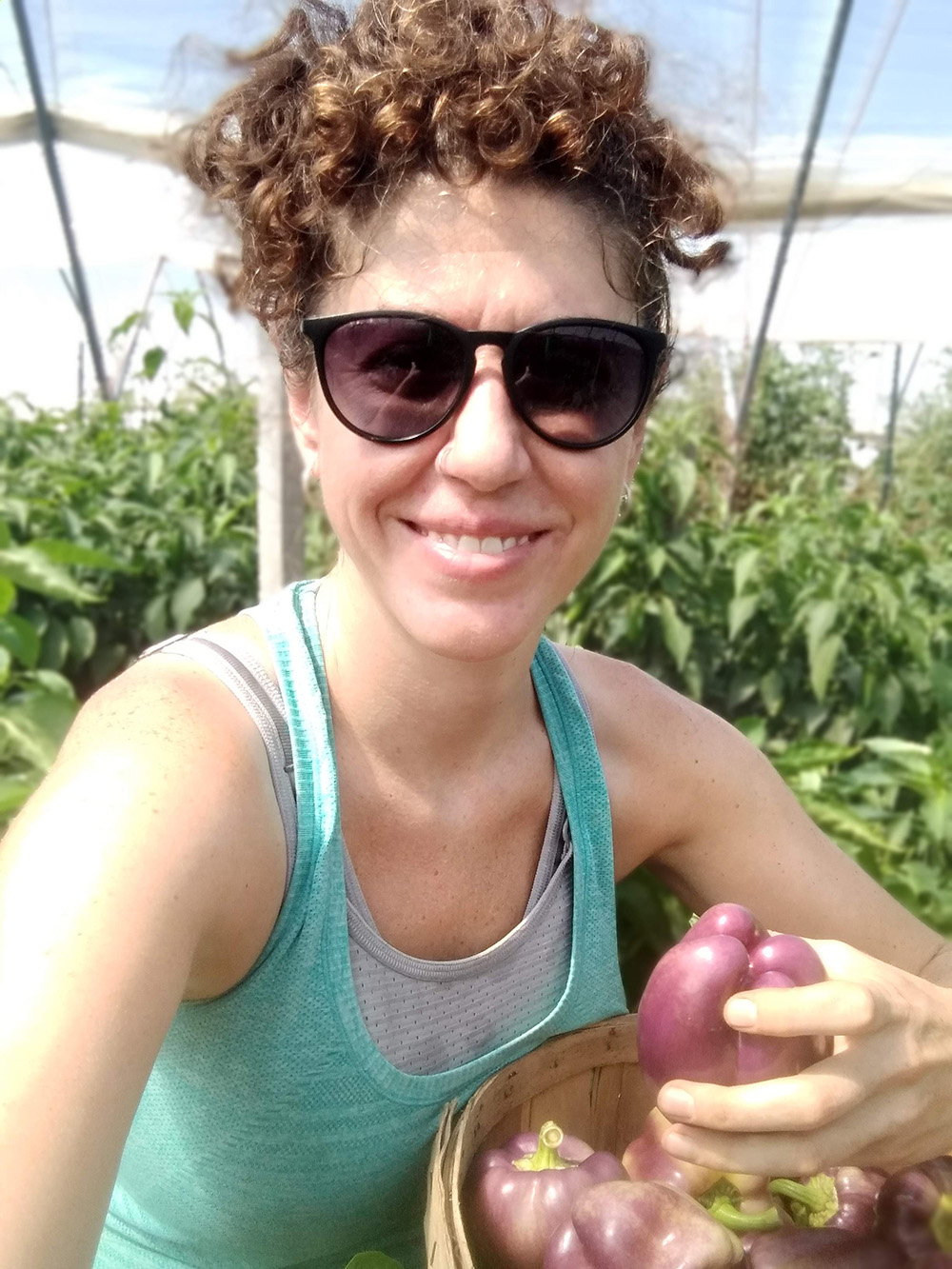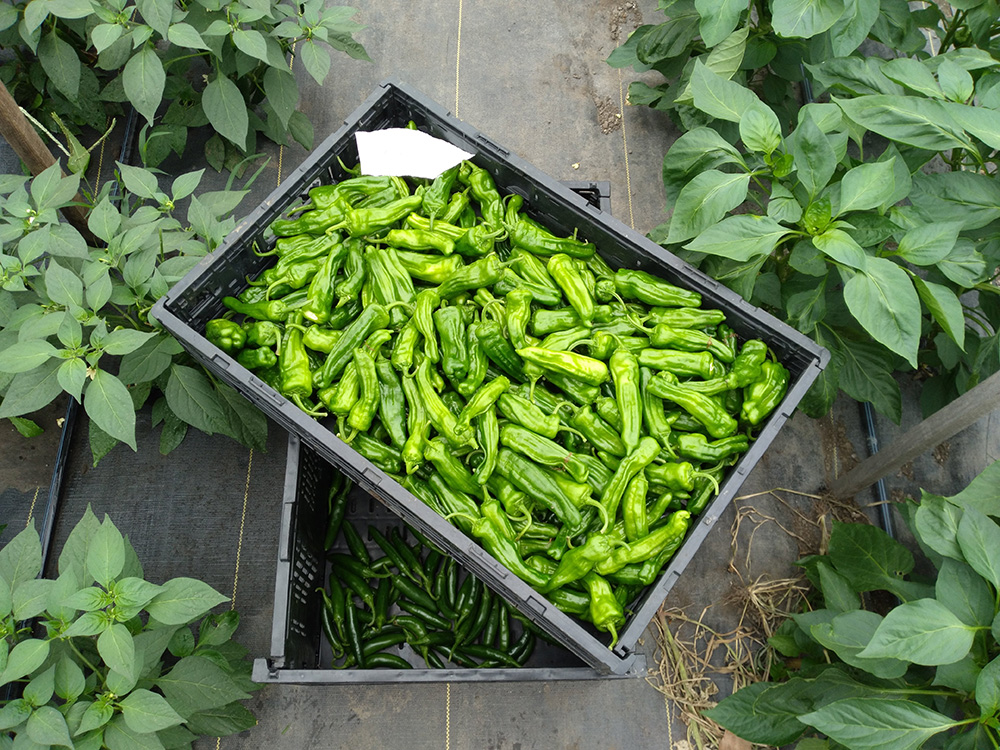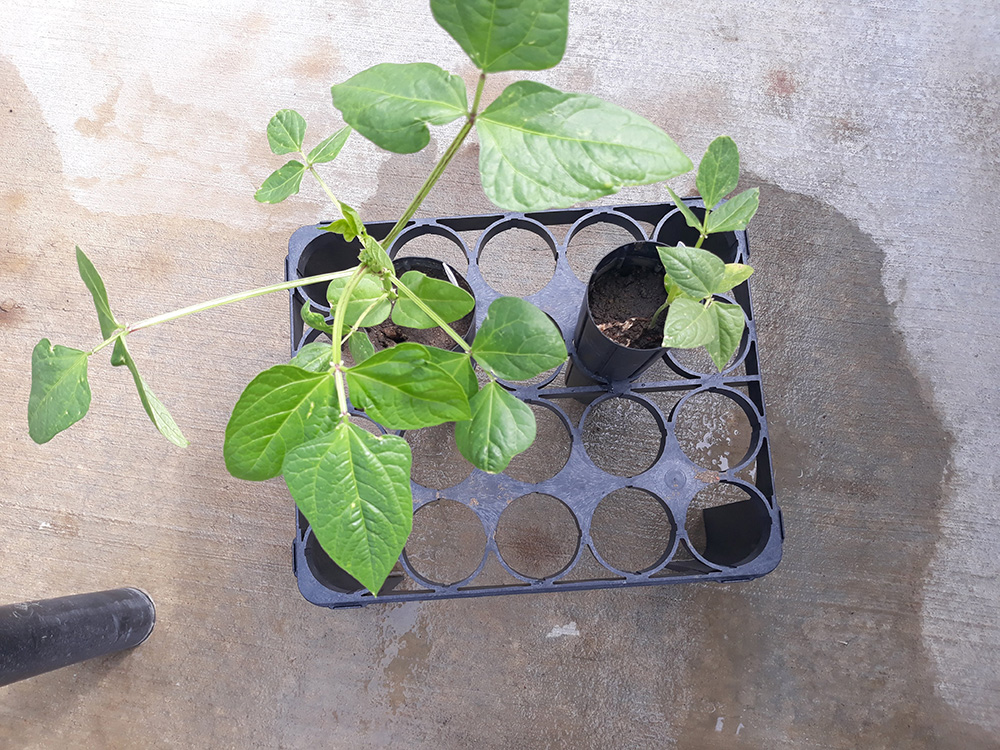Native fungi amendment shows promising results in organic crops
LAWRENCE — Can fungi used in restoring native landscapes boost organic crop production, too?

Over the past two growing seasons, University of Kansas researcher Liz Koziol has measured the harvest of tomatoes, peppers and other crops to see if adding locally native mycorrhizal fungi to the soil makes a difference. She’s about to enter season three.
“These fungi are beneficial microbes that spend all their time collecting soil nutrients that help plants grow more quickly, produce more fruit, survive water stress and even defend themselves against pests,” Koziol said.
“But not all mycorrhizae are the same, and some agricultural soils are lacking in beneficial fungi. In this study, we amend organic cropping soils with super-beneficial mycorrhizae to see if they can be used as a tool to make farmers’ work easier.”
Koziol, assistant research professor at the Kansas Biological Survey & Center for Ecological Research, has spent more than 12 years collecting mycorrhizal fungi, which live around plants’ root systems, from nature and isolating them in the lab. Her studies cover dozens of inoculation trials in different settings, including native restoration trials, cropping systems and greenhouses.
Her work has demonstrated how local mycorrhizal fungi boost growing systems and can transform landscapes.
In Koziol’s current crop study, she’s teamed up with local growers Scott Thellman of Juniper Hill Farms and Chris Black of Kaw Valley Cannabis.

Results so far are encouraging. Field and greenhouse trials at Juniper Hill showed consistently improved performance across organic crop varieties inoculated with the native fungi. Testing of 15 varieties in the field showed a weight increase of 13 to 54% in tomatoes and 3 to 12% in peppers. Greenhouse chard, basil and peppers all benefited, too.
Thellman said his crew was so impressed with the findings of the trials that they’d begun to incorporate more mycorrhizae into their starter fertilizers in the greenhouses and in the field.
“We hope to collaborate more with Liz in the future and bring more native mycorrhizae into all of our production systems, both organic and conventional,” he said.

Hemp plants inoculated with the mycorrhizal mixture showed an overall 15% improvement in the concentration of CBG (cannabigerol)—a nonpsychoactive compound that some medical studies indicate may have therapeutic potential in treating various diseases.
The project is supported by a $250,000 grant from the National Science Foundation Partner in Innovation program, which encourages entrepreneurship. Koziol’s startup, MycoBloom LLC, created before she came to KU, produces native mycorrhizal fungi as a soil amendment and provides them to prairie restoration practitioners.
Given the success of the current research trials — along with the interest of ag producers in the products — Koziol is likely to commercialize a product specific to organic crop growers. She would work with KU’s Center for Technology Commercialization via Mycobloom and sign a commercial license with the center.
Mycorrhizal fungi already are used in agriculture, but Koziol said there are drawbacks to the products on the market. Typically they contain the same one to five species, which represent a very small fraction of the total species pool. Individual fungi species vary in their effect on nutrient uptake and other benefits, such as disease resistance and alleviation of drought stress.
In addition, these fungi can be locally adapted to their home soil nutrient and precipitation levels, so they may not be as effective where they are introduced.
Another downside to the current fungi products is that the industry standard for producing them is cultivation in the lab, on Petri plates under sterile conditions — which means they don’t experience soil for many generations of cultivation. Koziol said that recent evidence indicated that this method of culture can result in fungi being less able to help crop nutrient uptake or becoming “weedy” and parasitic, actually harming the crop.
Two KU faculty members are part of Koziol’s study in a supervisory capacity. Jim Bever, Foundation Distinguished Professor of Ecology & Evolutionary Biology and a senior scientist at the Kansas Biological Survey & Center for Ecological Research, is co-principal investigator on the grant and supervises the research. Wally Meyer, director of the KU University Center and senior research associate at KU’s Institute for Policy & Social Research, supervises the entrepreneurial training that the grant supports for Koziol.
The Kansas Biological Survey & Center for Ecological Research, a KU designated research center, houses a diverse group of ecological research and remote sensing/GIS programs. It also manages the 3,300-acre KU Field Station, a resource for KU studies in the sciences, arts, humanities and professional schools, and for the community and other institutions.
Top right photo: Liz Koziol at Juniper Hill Farms.
Center right photo: Pepper harvest at Juniper Hill.
Bottom right photo: Side-by-side comparison of cowpeas treated (left) and not treated (right) with native mycorrhizal fungi.